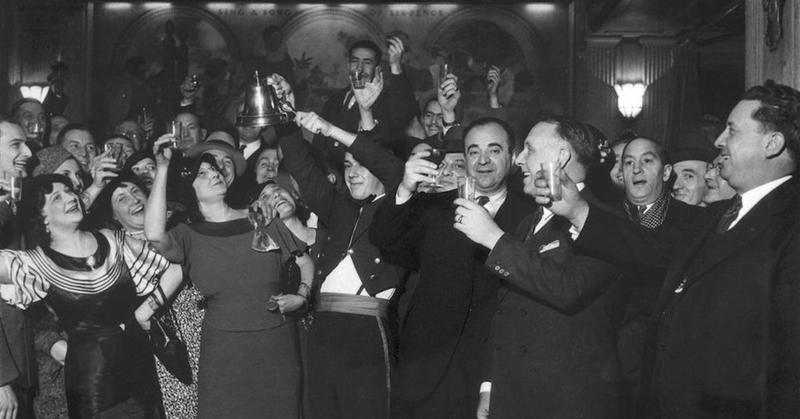FDR Ends Prohibition: The Immediate Aftermath And How The U.S. Settled Into Normalcy
By | March 19, 2020

Prohibition has been called the great national experiment, and it was decidedly one that failed. It started winding down on March 22, 1933, when FDR signed the Beer and Wine Revenue Act that allowed the sale of these "soft" alcohols as long as the money went to the feds, and ended completely later that year, when the 21st Amendment was ratified to repeal Prohibition. After more than 13 years, Americans could finally raise a glass of their favorite adult beverage and take a legal drink. Let's look at the end of Prohibition and how the United States returned to normalcy.

Why Was Prohibition Even A Thing?
Various groups, most notably early feminist organizations, had been pushing Congress for a nationwide ban on alcohol for decades. They claimed that husbands were squandering their paychecks at the bars, leaving their wives and children destitute, and that was when the devil's juice wasn't driving the men to violence. Crime, overcrowded prisons, poverty, poor hygiene, and infectious diseases were all blamed on the consumption of alcohol. Prohibiting the production and sale of liquor, so they claimed, would greatly reduce the social problems of the country.

Why Didn't Prohibition Work?
Prohibition famously failed to convince people to stop drinking; all it really accomplished was boosting the profits of organized crime. Warring groups of mobsters controlled the supply of underground liquor, overseeing its production and distribution as well as operating underground bars and taverns called speakeasies. With the rise of mob activity came a rise of the attendant violence—this is the era of the St. Valentine's Day Massacre, after all.

The Push To End Prohibition
The stock market crash of 1929 forced Americans to take a hard look at the economic impact of Prohibition. Not only did Prohibition fail to stop the consumption of alcohol, the U.S. government lost out on revenue it could have collected by taxing liquor. As the Great Depression wore on, it was clear that the government could no longer afford to stand on principle. By the 1930s, many of the same people who advocated for the prohibition of alcohol began suggesting that the 18th Amendment be repealed for the sake of the unemployment rate.

The Election Of FDR
During the presidential election of 1932, Democratic candidate Franklin D. Roosevelt ran on a promise to repeal Prohibition, a key factor that led to his success. On March 22, 1933, he signed the Cullen-Harrison Act, the first step to the 21st Amendment. "I trust in the good sense of the American people that they will not bring themselves the curse of excessive use of intoxicating liquors, to the detriment of health, morals, and social integrity," Roosevelt told the public.

Liquor Flows Freely Again
When FDR ended Prohibition, Americans celebrated like college kids on spring break. According to reports of the day, people flocked to restaurants and nightclubs, where they uncorked the champagne and danced to "Happy Days Are Here Again." The end of Prohibition didn't necessarily mean mainlining moonshine, however. According to some historians, it was easier to get a drink during Prohibition than it was after alcohol became legal again. The government placed a number of restrictions on the alcohol industry, such as the mandate that the alcohol content of beer and wine must be below 3.2%. Businesses were also barred from selling alcohol on Sundays, bars and nightclubs were required to close by a certain time of night, and no one under the age of 21 could legally imbibe. Liquor was also suddenly subject to taxation, making the cost of a beer higher than when it was illegal.

A Windfall of Liquor Tax
As hoped, taxes collected on the newly legal liquor helped the lagging national economy. In the first year after the ratification of the 21st Amendment alone, the federal government collected more than $250 million in alcohol taxes. That windfall helped to fund FDR's New Deal programs, which in turn helped to pull the United States out of the Great Depression.

